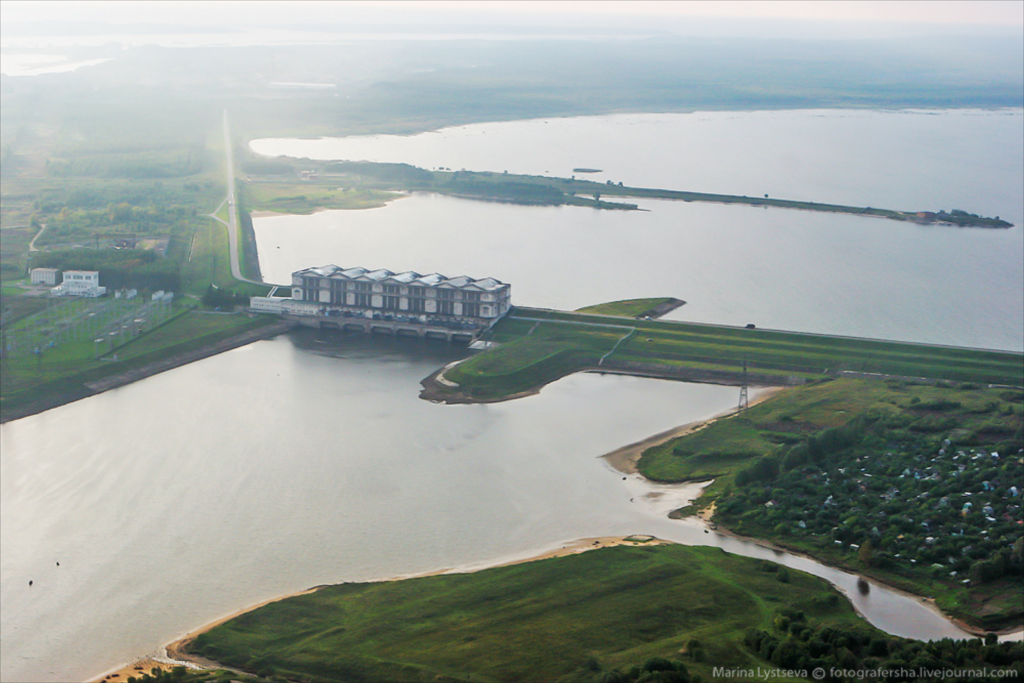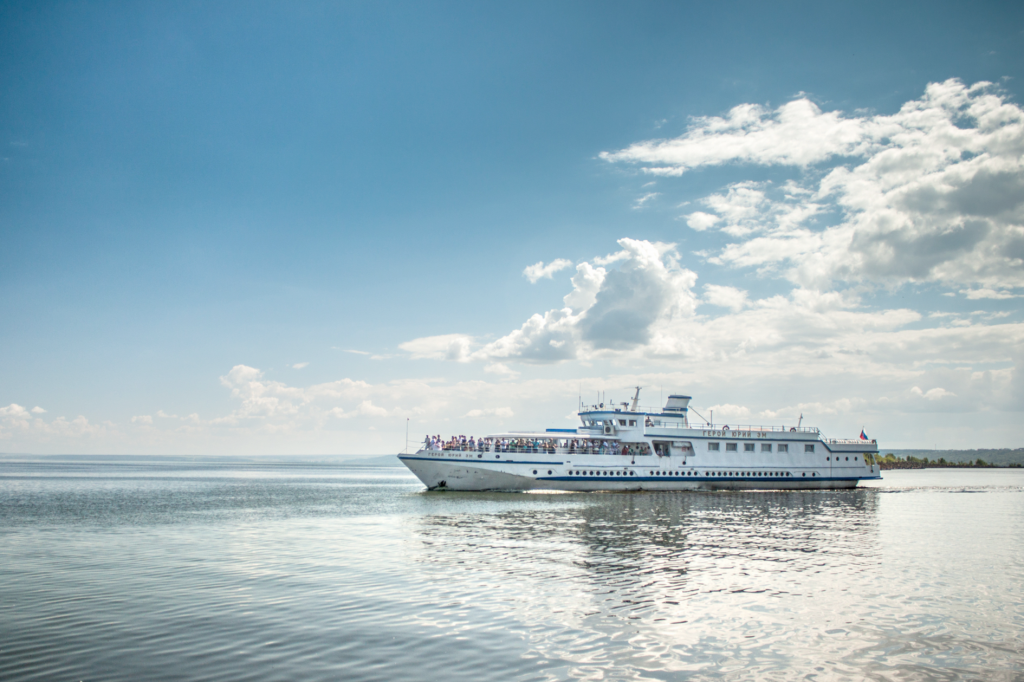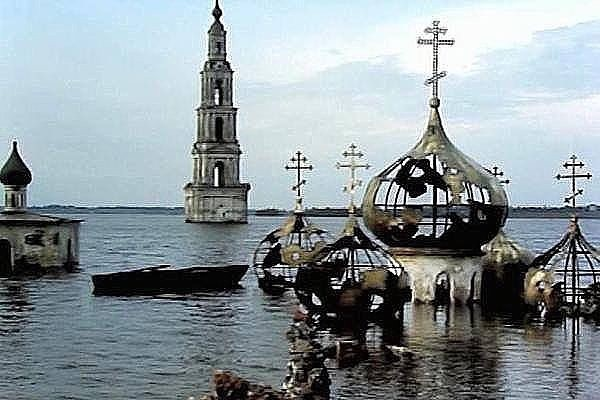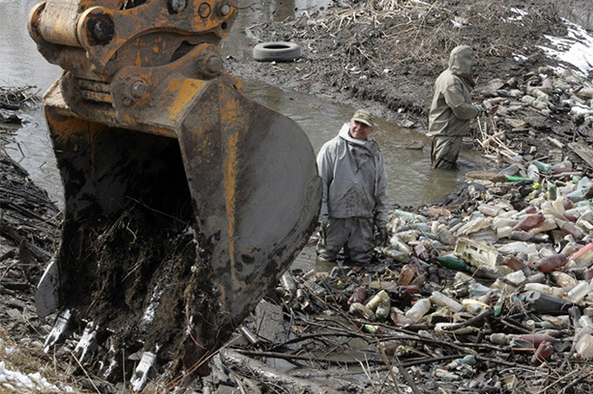Wikipedia states:
“The Volga is the longest river in Europe. It is also Europe’s largest river in terms of discharge and drainage basin. The river flows through central Russia and into the Caspian Sea, and is widely regarded as the national river of Russia.
“Eleven of the twenty largest cities of Russia, including the capital, Moscow, are located in the Volga’s drainage basin. Some of the largest reservoirs in the world can be found along the Volga. The river has a symbolic meaning in Russian culture and is often referred to as Volga-Matushka (Mother Volga) in Russian literature and folklore.”
Lately most of publications about the Volga in Russian media sound expresses anxiety. A popular Russian website lenta.ru published an article (https://lenta.ru/articles/2018/06/25/volga_gibnet/) entitled: “We will get a new Chernobyl” goes on to say:
“The main Russian river was turned into a poisonous cesspool. This threatens the whole of Russia.”
The director of the Institute of Ecology of the Volga Basin of the Russian Academy of Sciences, Professor, Doctor of Biology Sergei Saksonov told “Lenta.ru”:
“From a strictly scientific point of view, the Volga is no longer a river, but a cascade of reservoirs – or rather, a cascade of hydraulic structures with a non-protracted regime. By what hydrological criteria are the true rivers and the cascade of reservoirs distinguished?
“There are no hard criteria, but if the river is blocked in many places, then it can not be considered a full-fledged river.”
The riverbed of the Volga, as is known, is blocked by dams in eight places, creating eight reservoirs:
• Volgograd Reservoir
• Saratov Reservoir
• Cheboksary Reservoir
• Gorky Reservoir
• Rybinsk Reservoir
• Uglich Reservoir
• Ivankovo Reservoir
• Kuybyshev Reservoir – the largest in Europe by surface.
When I was seventeen I took a Volga River cruise. We were crossing Kuybyshev Reservoir during the night. Back then Russians called this reservoir “Kuybyshev Sea”. It did look like a sea, no shores could be seen. But its appearance was that of a very special, human made sea. The entire surface of it up to horizon was covered with buoys, caring multicolored lights. It was extremely beautiful. The beauty was making heart of the Soviet youth tremble with pride, pride for the greatness of humans, creating seas.
How wrong I was!
The artificial seas in fact were killing and still keep killing the Volga!
According to the ecological website eco.rosuchebnik.ru,
“Now the Volga from the flowing river has become a chain of weakly flowing reservoirs, where all its physical, chemical and biological properties have changed radically. In the entire hydrographic system of the Volga, water exchange decreased 12 times. More than 30% of the 150 thousand tributaries of the river disappeared. Most of the sources of rivers, streams, springs are clogged, polluted, compacted, deforested, dug, drained, often used for industrial and civil buildings, fuel and pesticide stores, cattle stands. All of the above led to a sharp deterioration in water quality.”
“Are there really river areas on the Volga?” – asking professor Samsonov on the site lenta.ru, and answers: “On the Volga there are only small fragments of river, located, as a rule, behind dams of reservoirs. But as a natural body of water, as a river, we’ve lost the Volga.
“Some environmentalists say that the Volga is rapidly turning into a swamp.
It’s not that. The main problem is different: the natural biomass disappears in the Volga and alien organisms appear in place of it. Blue-green algae (Cyanobacteria), which under special breeding conditions give a colossal biomass, lead to the flowering of water. In addition, they aggressively absorb oxygen, displacing other living organisms from the Volga. That’s where the real trouble is – the organic pollution of the Volga is now just colossal.”
“Why do blue-green algae so actively multiply? They are fed by untreated sewage from the sewage system, from landfills and fertilizers from the fields. The impact on the Volga is now so great and deep that the river simply does not have time to self-clean. We recently assessed the damage that is constantly being inflicted on the biological resources of the Volga. According to the most conservative estimates, we obtained an amount of 70 million rubles annually.”
In the recent past, more than 500,000 tons of valuable commercial fish (sturgeon, herring, salmon, whitefish, carp, pike perch, etc.) were caught in the Volga. This is the only area on the planet for the formation of stocks and conservation of sturgeon, commercial catches which had accounted for 50% of world production. However, biological water resources of the Volga Basin, due to anthropogenic factors, underwent a significant transformation. The dams of the hydroelectric power station have become a barrier to passing fish. Their penetration into the reservoir is possible only with the help of fish lifts. This quickly enough led to the almost complete disappearance of passing fish from the Volga Basin by the beginning of the 1970s.
Volga reservoirs were created in the Stalin’s time. The main task of the Volga reservoirs was the producing of electric power. Absolutely everything was subordinated to this goal, nobody cared that fishes dies in the Volga and the quality of drinking water is reduced.
Monstrous costs and disasters accompanied these gigantic construction projects: dozens of settlements (including ancient cities) were destroyed; fertile coastal areas were flooded, not to mention the fact that tens of thousands of GULAG prisoners were killed in the construction of the dams.
But how much water reservoirs built by such a price turned out to be useful and effective, judging from the today’s perspective? Of course, at Stalin’s time energy received from them provided a significant impetus to the development of the country and its industry. For a short term, these hydroelectric power plants fulfilled their tasks. But lately multiple nuclear plants started growing on the Volga shores, becoming the main source of the energy.
Here is the last paragraphs of the interview given to “Lenta.ru” by Doctor of Biology Sergei Saksonov:
“Speaking figuratively, now the Volga simply begs: ‘Enough of raping me! I can not stand it anymore.’ For some parameters, the degradation of its ecosystem has gone too far – for pollution, for toxic bottom sediments. In order to reverse the current grave situation with our main national river, we must act right now.
“What to do? In the late 1980s, some environmentalists proposed a radical solution to this problem: simply to lower the entire Volga-Kama cascade of HPPs. It’s real? Of course not. Take, for example, the Kuibyshev Reservoir. As you know, it is the largest in Europe and the third largest in the world.
“Imagine that the Kuibyshev reservoir will be brought down. Millions of square hectares of its muddy bottom will turn into poisonous dust, which the wind will blow in all directions. And then we will get a new Chernobyl!
“What, then, should be done? There is no direct and unequivocal answer to this question.”





